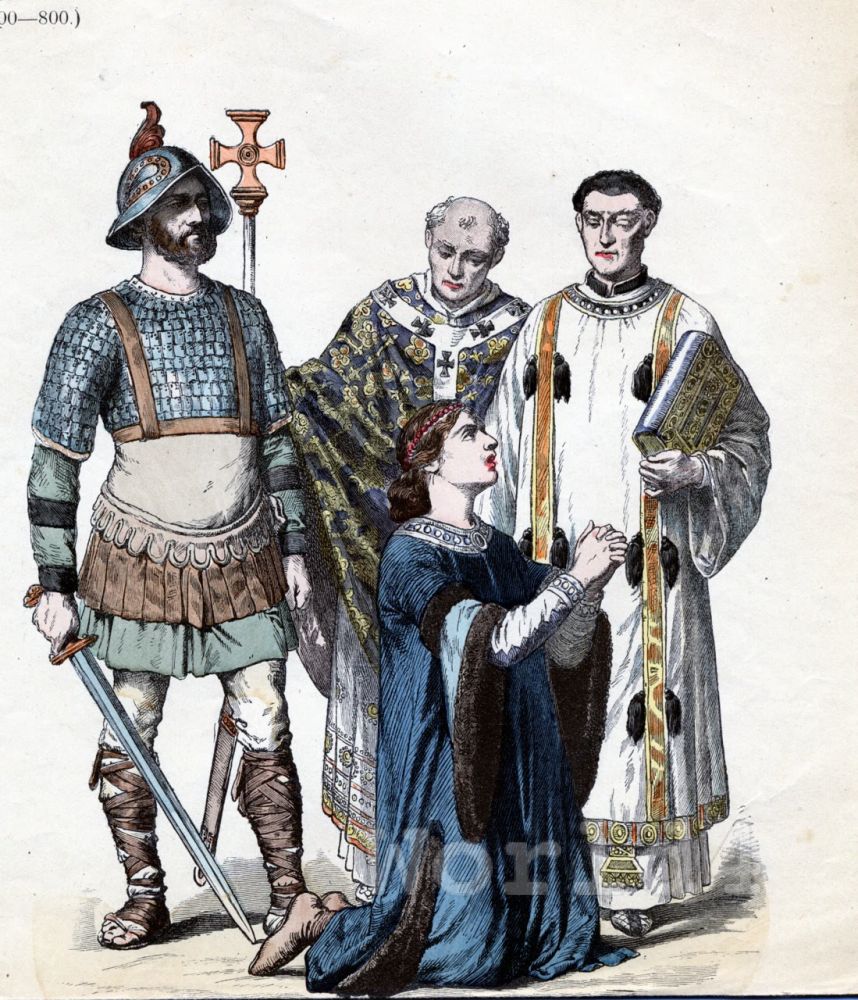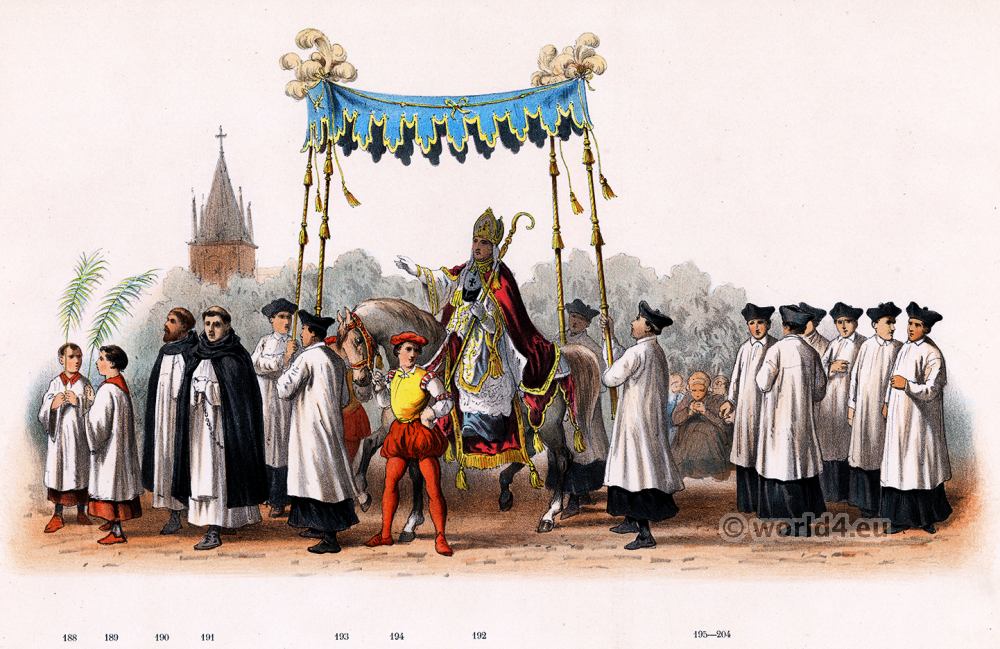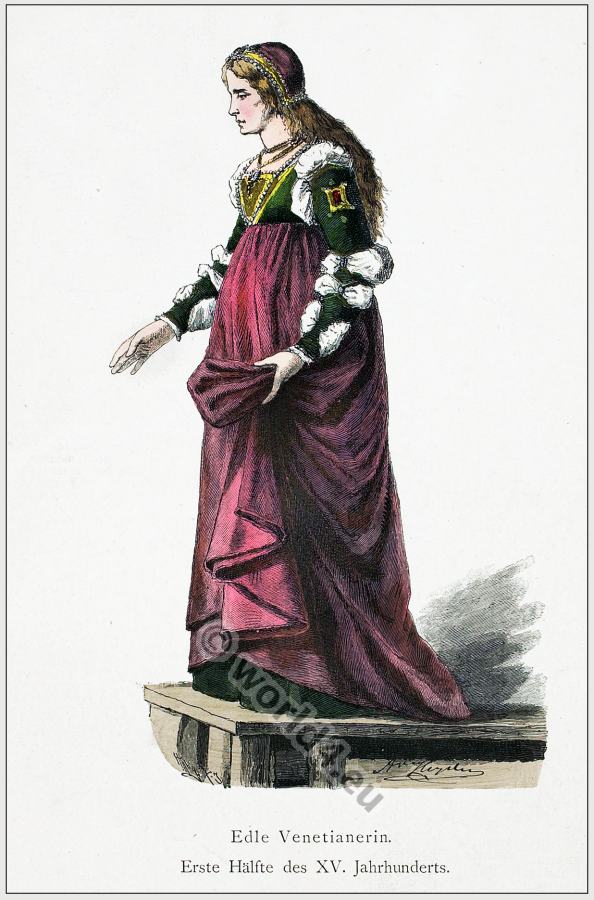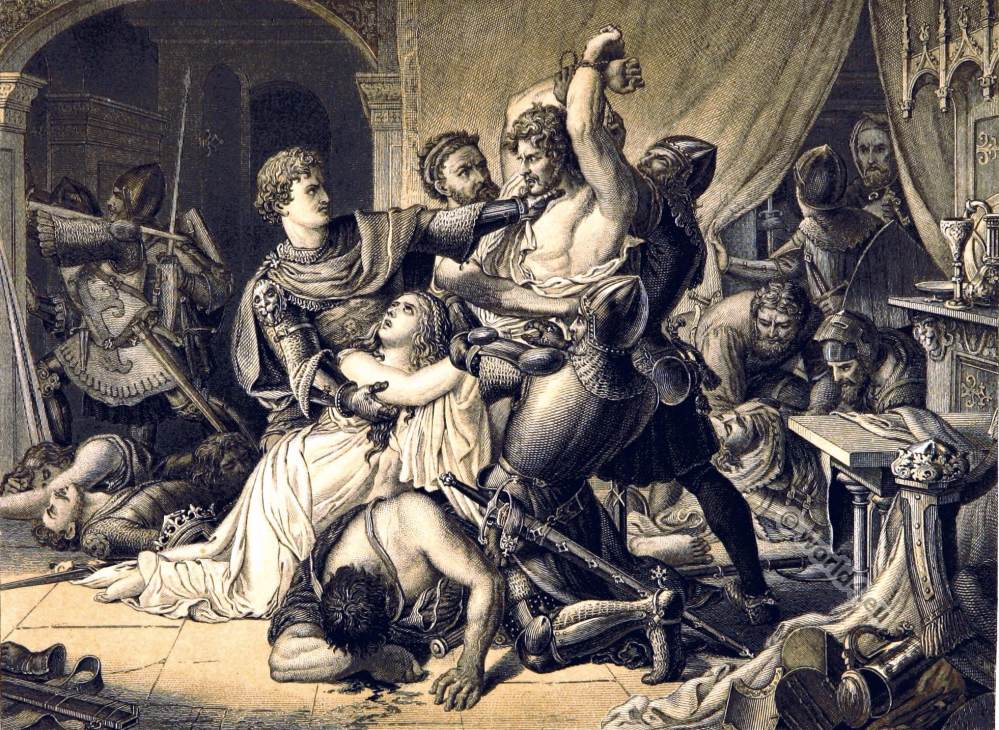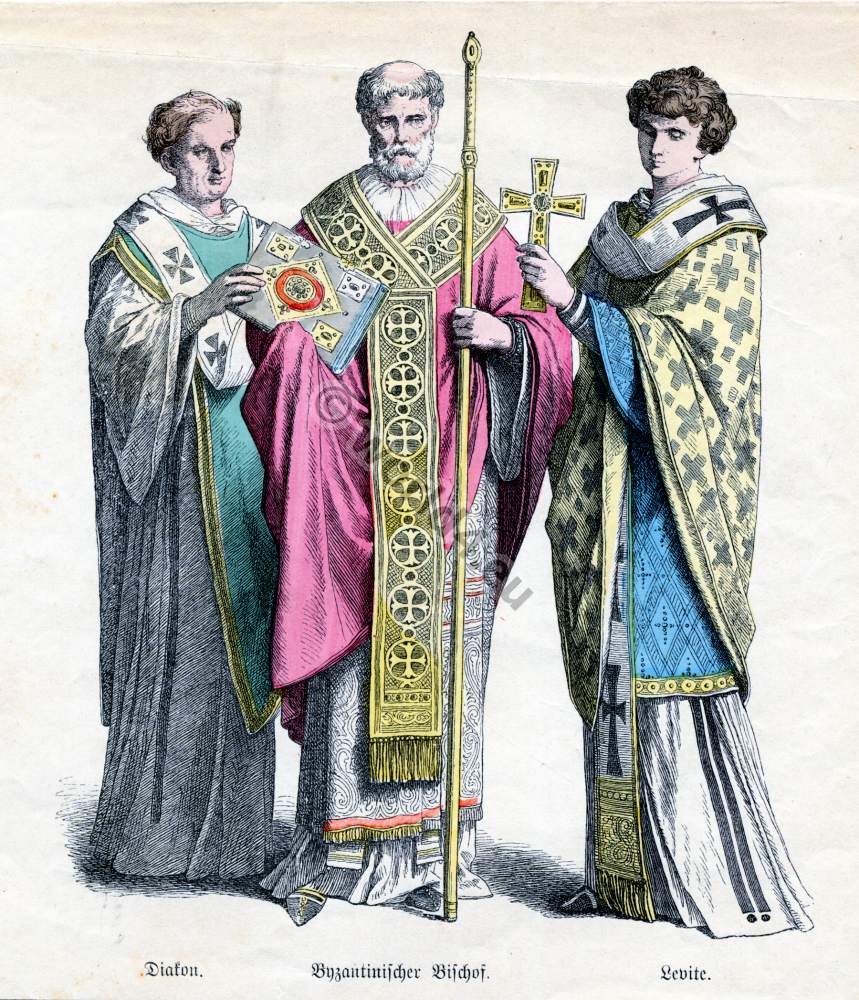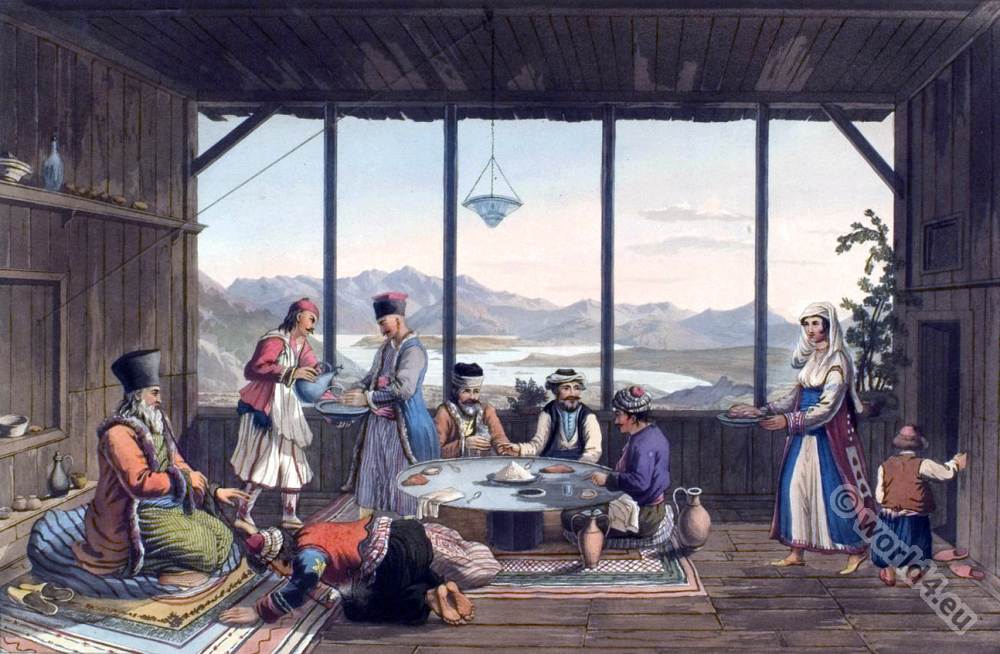
COSTUME OF THE FIFTEENTH CENTURY.
ROGER WALDEN, BISHOP OF LONDON. ANNO 1405
by Charles Hamilton Smith.
This prelate first appears to have been dean of York. He was admitted Prebendary of Gillingham, in the diocese of Salisbury, in January 1392; September, same year, collated to a prebend in the diocese of Exeter, being then treasurer of Calais.
Afterwards secretary to Richard II., and subsequently treasurer of England, which high office he resigned September 20, 1395.—On February 10th, 1397, he was admitted to the prebend of Wilesdon, in St. Paul’s cathedral.
Archbishop Arundel
In 1398, inconsequence of Archbishop Arundel having been banished the kingdom, Walden was promoted to the vacant see of Canterbury; but upon the deposition of Richard II., the Pope (who favoured Arundel) pronounced him an intruder and usurper of the archbishopric, and by his bull restored Arundel.
Walden was thus a bishop without a bishopric, and so continued about two years, when by the kind endeavours of Archbishop Arundel, he was appointed to the vacant see of London; which, however, he enjoyed for a very short period: that mitre was bestowed upon him December 10, 1404; he was installed June 30, 1405, and he died June 6th following: he was interred in the priory of St. Bartholomew in Smithfield.*)
*) The Pope’s “bulla provisionis” bears this date.
**) See Godwin de Presulibus Angl. — Wharton de Episcopis Londini.
Painting on glass in St. Mary’s Hall, Coventry
The figure is copied from a painting on glass in St. Mary’s Hall, Coventry; where Walden is placed by the side of his benefactor Arundel: from their having a place in this hall, it is evident that both were members, and perhaps benefactors, of the Trinity Gild, which probably happened in October, 6th of Henry IV.; for the king assembled a parliament in that year at Coventry, (which acquired the name of Parliaynentum indoctoirum, or the laymen’s parliament.) *)
*) Consult Holinshed’s Chronicle, sub anno.
Archbishop Arundel was present, and much distinguished himself by his spirited conduct and energetic speech in defence of the church. It is presumed that Walden attended; for though the date of his elevation to the see of London is stated by Godwin to be December 12, yet in fact the Papal bull only is of that date; and as Braybroke died 28th of August, 1404, it is not unlikely that Walden was nominated previous to the parliament held at Coventry, and attended as Bishop of London.
The short period he enjoyed that dignity, allows of no other public occasion for his visiting Coventry; and as the two prelates are placed together in the same window, the conjecture almost amounts
to proof.
Arms, according to Wharton. The Bishop bore sable two barulets in chief three cinquefoils argent.
AUTHORITY.
From a painting on glass in the windows of St. Mary’s Hall, Coventry. For the whole of this article I am indebted to Mr. Thomas Sharp of Coventry: the background is ideal, though the materials are taken from existing architectural remains.
Source: Selections of the ancient costume of Great Britain and Ireland from the seventh to the sixteenth century, by Charles Hamilton Smith. London: Colnaghi, 1814.
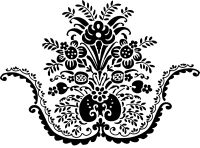
Discover more from World4 Costume Culture History
Subscribe to get the latest posts sent to your email.

